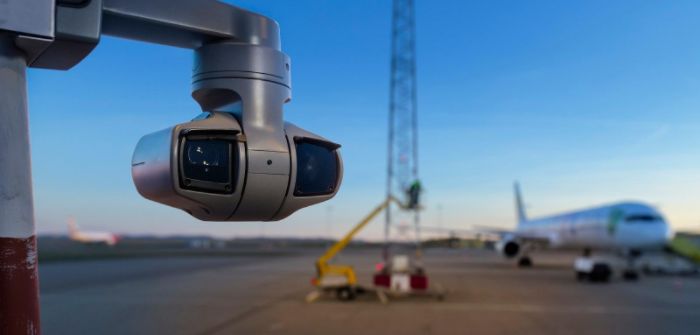Lucas Young, business development manager, transport, Axis Communications, discusses how innovative new technology can effectively protect passengers.
Few people take security as seriously as airport operators. Safely managing the movement of thousands of passengers daily onto a highly sophisticated yet potentially vulnerable form of transportation now requires more cutting-edge technology than ever, to ensure it continues to be one of the safest forms of travel. The issue of aircraft safety has been highlighted more recently through the marked rise in drone sightings around airport perimeters worldwide, leading to large numbers of flight delays and cancellations.
Drone sightings are a modern type of nuisance with the potential to cause great damage. But inside airports there are also many other forms of more traditional criminality. For example, many terminals have evolved to accommodate significant shopping concourses as a means of both enhancing the traveling experience and boosting airport revenues. On show is a tempting display of highly desirable products for both organized criminal gangs and the opportunistic shoplifter alike. Furthermore, the theft of bags and luggage is a huge challenge at some locations, with large numbers of tired travelers perhaps not paying as much attention as they might otherwise.
With so many threat vectors to monitor both inside and out, airports are perfectly positioned to benefit from the advantages that connected devices and the Internet of Things (IoT) are bringing to the physical security market. A connected security system is far greater than the sum of its parts and can offer protection from perimeter to plane using increasingly cost-effective solutions.
Intelligent technology inside the airport
Networked surveillance technology isn’t just for the airport’s perimeter and airfield, however – it also has many applications inside the terminal. At check-in and passport control, facial recognition is becoming a critical component of passenger security, providing early warning that someone may be on a no-fly list, for example.
There are other opportunities too, such as intelligent analytics systems which have been developed for retail environments. These can identify suspicious behavior, such as customers loitering next to high-value items or ATMs. A smart camera can directly instruct a connected speaker to play an automated announcement subtly informing the individual that they have been seen, or the camera might send an alert containing an image of the suspect person to a member of staff via a handset.

As security systems digitize and mature, they become more multifunctional too, with the data they provide having real commercial value. The lessons from retail are that security cameras can host analytics which identify the build-up of queues and alert the organization to provide more staff at key points.
What works for checkouts can also work for passport control. Taking that one step further, video data can be combined with other sources of data for long-term analysis and planning for future developments and even emergency situations. Being able to evidence footfall numbers with video is a strong argument for premium price tags on retail and advertising space. Similarly, understanding customer flows can help identify potential pinch points in an evacuation scenario.
All of these technologies are feasible today and are becoming increasingly cost-effective to deploy. The key is the transition to digital data for all parts of a system, and the ability to connect cameras to door controls, perimeter alarms and more. Truly intelligent airport security is here, and passengers should expect no less.


